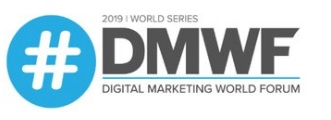
For anyone struggling with workplace distraction; believe me, I’ve been there. For anyone who doesn’t think they are struggling with workplace distraction; believe me, you are.
As a digital anthropologist in Silicon Valley, I have studied this topic for years and should have known better, but a few years ago I was so mired in distraction that I missed deadlines and couldn’t finish an important book proposal. Concentrating for five minutes was an achievement.
I did some research and uncovered a number of superficial fixes – apps, meditation – but realised deeper solutions weren’t available. So I began building on this research to develop my own solutions, which I share in my book Lifescale: How to Live a More Creative, Productive and Happy Life.
What I discovered is a tech industry spending billions every year to distract us, at work and at play. To fight this battle and reclaim productivity and true creativity, we need to acknowledge the problem and then, as business owners and proactive employees, take steps to fix it. Below are observations, a few predictions, and achievable ideas for alleviating workplace distraction now – for larger firms, small businesses, and solo practitioners.
Too much togetherness?
Open workspaces with limited privacy are exacerbating our distraction. Based on an extensive survey, an eBook from Poly.com, ‘Perils of an Open Office’, offers insights into how and why our workplaces are so prone to disruptions and indulgent of short attention spans. Their solutions include more quiet zones where team members are free to block calls and use noise-cancelling headphones, and designing spaces with more ‘huddle rooms’ and ‘phone booths equipped with audio, video, and content sharing platforms.’
The tech industry is spending billions every year to distract us, at work and at play. We need to acknowledge this problem and then, as business owners and proactive employees, take steps to fix it
Achieving these solutions involves both intent on the part of team members and consistent investment and support from managers to help employees set aside time and space to concentrate on important work, free from email, incessant phone calls and staff interruptions.
An elephant-in-the-room point: complementing open floor plans with access to more traditional offices – in other words, rooms with four walls and a door – is a good idea too.
Compounding the ‘Slack’
Most of us know the distractions presented by our smartphones, from email, to scrolling, to Candy Crush, but now even cloud-based workplace productivity systems like Slack are exacerbating problems in ways similar to open workspaces. In many work environments, it’s another case of the cure being worse than the disease.
An in-depth piece in Vox/Recode by Rani Molla, titled ‘The productivity pit: How Slack is ruining work’, describes how ‘yet another communications tool can result in a surfeit of information.’
“Increasing emphasis on new technology to moderate our workdays isn’t necessarily making our work better or making us more productive,” Molla wrote. “If wielded poorly, it can even make it worse… Much like the ubiquitous open-floor plan, this type of software is meant to get different parts of a company working together, to break down hierarchies, to spark chance interactions and innovations. In practice, it can be hell.”
Instead of streamlined productivity, workers at big companies are sending hundreds of Slack messages a week. “Keeping up with these conversations can seem like a full-time job,” Molla added. “After a while, the software goes from helping you work to making it impossible to get work done.”
The first step: Asking for help
Recently, the New York Times ran a piece on upper-income parents hiring coaches to help wean their children off smartphones, laptops, and gaming. Often, these coaches had to remind the parents themselves what life was like before pervasive tech. Though most had post-graduate degrees, many of the coaches had the most impact by focusing on teaching kids the basics of playing: kicking balls, making costumes, playing let’s pretend, and so on.
While some found this approach extreme, I thought it was 100% on point and believe that within the next few years, more parents will be following suit. Employers could learn from this practice too. No-one blinks when we hire psychologists and personal trainers to improve and maintain our mental and physical health. So why not distraction coaches?
In 2019, digital distraction has become a serious challenge to our professional and emotional wellbeing. I believe trainers who can address the overwhelming distraction of technology – sent into overdrive by persuasive design – could have a tremendous impact on the workplace, which in the US at least, sees almost a trillion dollars in losses every year due to the digital distraction. It’s a growth industry.
Emphasising digital distraction as part of HR onboarding practices will also be standard in the next few years, I believe. By implementing training that tackles this topic early, and reinforcing it with sophisticated continuing education programming that addresses the addictive aspects of tech, companies can help slash lost productivity by billions.
The productivity thief
In an article called ‘Work Distractions – The Productivity Thief’, Charles H. Wilson, attorney for Epstein Becker Green Wickliff & Hall PC, offers some tough advice on how employers can create policies to help limit distractions. “How far an employer can go in monitoring and disciplining employees for inappropriate personal emails and instant messaging largely depends on whether the employer has a clearly defined and well-worded computer usage privacy policy,” the article noted.
Wilson also recommends management should:
- Set the expectation that personal use of computers, phones, and other distractions during company time – outside of scheduled breaks – is unacceptable
- Supervisors should be given the responsibility for implementing and addressing misuse of the policy. Leaders should be in daily contact with employees, monitor performance, and address issues as they arise, looking for patterns in dropped performance around tech use
- Acknowledge employees doing things right – notice and reward those who continually set the type of examples desired and who perform at higher-than-expected levels
- Implement a ‘corrective action process’ against employees who continue to abuse distraction policies
Emphasising digital distraction as part of HR onboarding practices will be standard in the next few years – and training can be put in which tackles this topic early
Wilson’s approach may seem zealous, and I usually opt for gentler tactics, but his points make sense. I think policies should also include language that encourages employees to block emails, phone calls and personal interruptions for one, two, even up to four hour intervals when they have important assignments that require deep focus.
Additionally, most distracted employees know they have a problem and will be eager to partner with management in finding solutions.
Fighting distraction in a small business
For small business owners and ‘solo-preneurs’, the challenges of fighting distraction and prioritising periods of creativity and deep focus against paperwork and smaller tasks can be tremendous. However, many of the same principles of fighting distraction above also apply to small business owners.
Research has shown that no matter how hard we try, multi-tasking just doesn’t work – it reduces work quality and shrinks productivity by 40%. So it’s in everyone’s best interest to stop toggling. A few suggestions for small business owners:
- Contain distractions: Yes, distractions will happen, especially when we’re running our own shops. However, it is essential that we find ways to contain them and give ourselves time to focus. We need to learn what ‘real’ emergencies look like and leave the others for later.
“By not responding, you are sending a message that you are a strong-willed, focused person who is very busy and over time you will be bothered less by trivial, time-wasting matters,” writes emotional intelligence expert Harvey Deutschendorf in Fast Company
- Set aside time for creation: As an entrepreneur, you have to balance creation and essential tasks like invoicing, which can be difficult. Figure out how to schedule time for both ‘inspiration’ and ‘doing-the-work’ modes and make sure you give yourself enough time to really focus on each task – 15 minutes of ‘creativity’ won’t give you time to dig deep
Conclusion
Rediscovering our capacity to focus takes time, but it can be done. We need to address the issue of distraction as an industry, studying the problem in greater depth and providing training, coaching, counselling and support that enables our teams to do the deep work that requires concentration and creativity.
 Interested in hearing leading global brands discuss subjects like this in person?
Interested in hearing leading global brands discuss subjects like this in person?
Find out more about Digital Marketing World Forum (#DMWF) Europe, London, North America, and Singapore.





